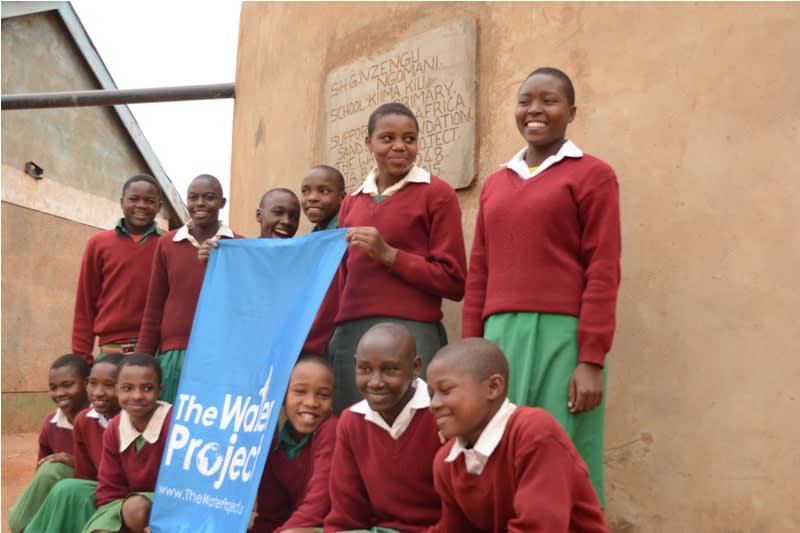This project is a part of our shared program with Africa Sand Dam Foundation. Our team is pleased to directly share the below report (edited for clarity, as needed).
BACKGROUND INFORMATION
Kiima Kiu Primary School is located in Mwanyani village, Mukaa District, Makueni county. The population of the school is 261 students (115 boys and 146 girls). The school staff is 11 teachers (4 males and 7 females) and 2 sub-ordinate staff (1 male and 1 female).
The school currently has 3 options for getting water for daily use. There is an earth dam 1 km away from the school. The students must walk 20 minutes each direction to use this source. The school can purchase water from a local market for 20 Kenyan shillings per 20 L jerrican. Lastly, the students each carry 2-5 L of water with them to school each day from home. Access to water for each household would be similar to the access the school has, so this option is no less difficult.
The school does not have any functional sources of water of its own. There is a water storage tank on the school grounds, but it is not functional.
The school has 24 latrines (8 for boys, 8 for girls, and 8 for teachers). Considering the population of the school, that means there is one latrine for every 14 boys and one latrine for every 18 girls.
Sadly, while the number of latrines fits the World Health Organization's recommendations for the number of students, there are no hand washing stations available due to the shortage of water. This means students and staff are not able to safely wash their hands after using the latrine or before eating.
All of these factors lead to difficult challenges for the school, especially during the driest periods of the year:
- The students spend a lot of time fetching and carrying water every morning.
- Time spent away from the classroom leads to poor performance academically.
- A lack of safe water leads to outbreaks of waterborne diseases, causing students to miss even more lessons in school.
CONSTRUCTION PROGRESS
Construction for of the school tank began on 6/15/2015 and ended on 7/10/2015. The different steps in the process are outlined below:
1. Trenching 6/15-19/2015: The foundation of the tank is constructed by digging a hole which is then filled with stones. Once the stones are leveled and a form constructed, the hole is filled with cement to make a strong slab.
2. Walling, roofing and plastering 6/22/2015 to 7/7/2015: The walls of the tank are made of stones secured with cement. Once the walls are built to the required height, a final coat of cement is plastered on the inside and outside of the wall, leaving a smooth finish. The roof of the tank is made up of a wooden frame covered with corrugated steel.
3. Guttering 7/8-10/2015: A gutter system is configured to catch the rain that falls on rooftops in the school compound and direct it into the tank. The water is safely stored for use by the school.
All parents in the school participated in the construction of the project. Each parent was allocated a specific day during the construction days to support the ASDF artisans in constructing the tanks. The school contributed the local materials such as stones, sand, and water to be used in construction of the tank.
 Rainwater Catchment
Rainwater Catchment
 Rehabilitation Project
Rehabilitation Project















